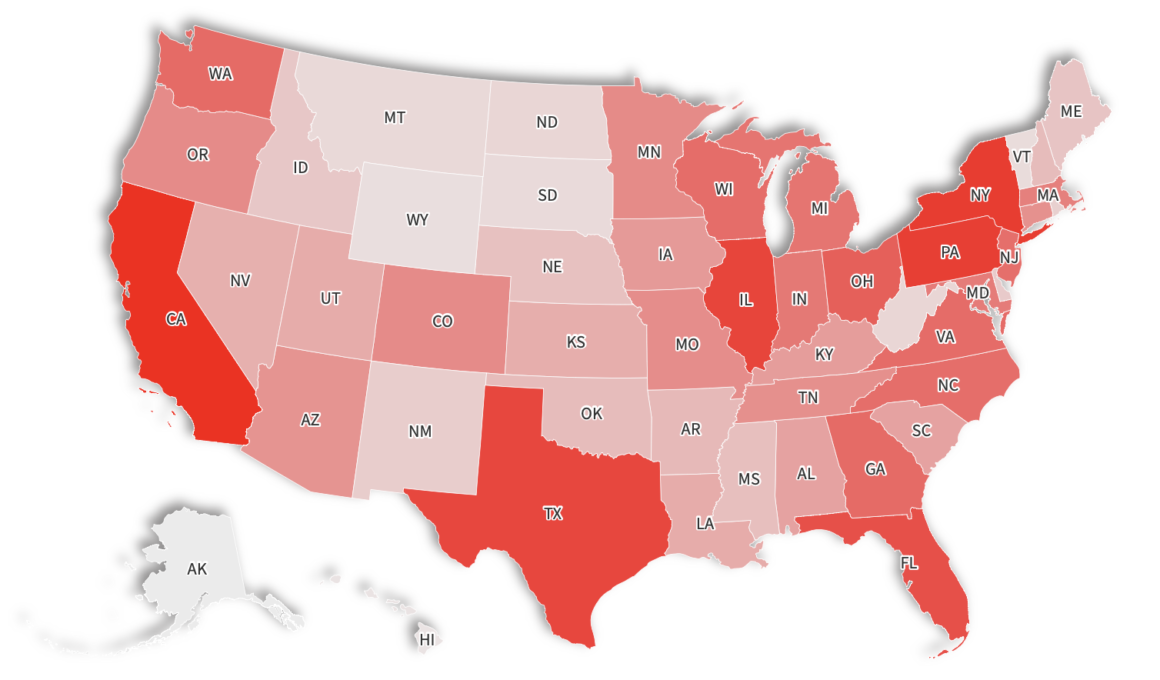Food recalls are not uncommon in the United States, but some states are more likely to be impacted than others.
A new analysis by regulatory compliance company Traceone has found that between 2020 and 2024, California was the top state impacted by withdrawals issued by the federal government.
Food recalls are enacted when a product is found to be in violation of laws administered by the U.S. Food and Drug Administration ( FDA) and the Food Safety and Inspection Service (FSIS). They are most often issued when a product contains undeclared allergens, harmful pathogens or foreign objects.
More From Newsweek Vault: Compare the Top Health Savings Account (HSA) Providers
While California came out on top with almost 40 percent of all recalls issued nationwide, other populous states came close. New Yorkers have been subject to 36.4 percent of all recalls while Pennsylvanians have been impacted by 35.8 percent.
Rounding off the top five is Illinois, where 34.8 percent of recalls issued have been active, and finally Texas, with 34.5 percent of recalls impacting residents of the Lone Star State.
Altogether, the top five states account for 114.6 million Americans, or 44.1 percent of the entire population, according to U.S. Census Bureau statistics from 2023.
More From Newsweek Vault: What Is a Health Savings Account?
At the other end of the spectrum, Alaska and Hawaii have had the lowest number of FDA and FSIS withdrawals in the last four years, at 14.7 and 15.6, respectively. In the contiguous United States, Wyoming (16.1 percent), Vermont (16.4 percent), and South Dakota (16.5 percent) had the lowest amount of recalls, according to Traceone.
The most common reasons for food recalls are unintended allergens present in the product and contamination with harmful bacteria or viruses. According to Traceone, allergen contamination accounts for almost 40 percent of all recalls issued between 2020 and 2024, whereas bacterial contamination, such as recalls for the presence of salmonella, E. coli and listeria, accounts for 21 percent of all recalls.
Allergens and pathogens can cause serious illness in some people, hence why recalls are so important when mistakes are made during food production.
“Foodborne diseases can be quite serious––even deadly,” Lisa R. Robinson, vice president of global food safety & public health at Ecolab, told Newsweek. “The challenge is that the pathogens responsible for foodborne illness are all naturally occurring. Salmonella and E. coli, for example, can be found in the gut biome of chickens and cattle. Cronobacter and Listeria are even more present––they can be found in soil and fields, so they’re easily tracked from one environment to another.”
In recent weeks, a multistate outbreak of Listeria has killed two people and hospitalized more than two dozen more following widespread contamination in deli meat products.
Other reasons for product recalls can include the presence of foreign objects, such as small pieces of plastic or metal, which accounts for 11.6 percent of recalls issued between 2020 and 2024. The presence of lead in food, which is particularly dangerous, made up 1.7 percent of withdrawals.
Traceone also found that the number of recalls issued per year increased from 454 to 547 between 2020 and 2023, an increase of more than 20 percent. It projects that in 2024, the number of total recalls will “roughly match” 2023’s total.








